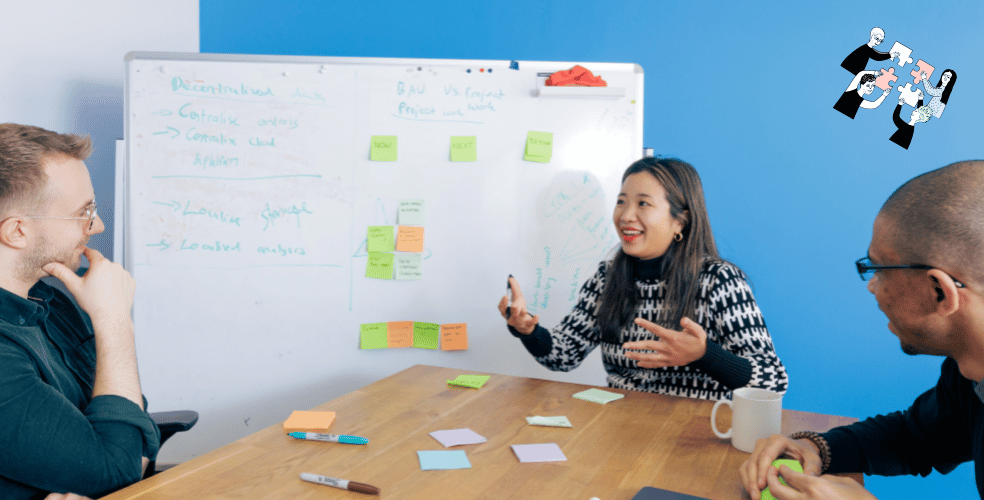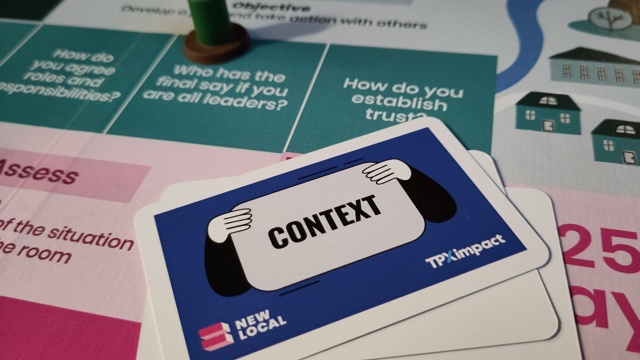In a rapidly evolving digital landscape, choosing the right way to deliver value and impact on a project is essential for organisations looking to be innovative, constantly improving and providing value to users and clients.
As we covered in our comprehensive guide, agile ways of working are now the go-to for many teams when it comes to delivering projects. While it is no doubt effective, agile must be seen as more than just a working methodology to be successful and deliver the best results. It needs to be a mindset that is embedded into everything organisations and teams do.
In this piece, we discuss how organisations and project teams need to and can embrace an agile mindset, prioritising collaboration, trust, flexibility, and continuous improvement.
The Agile Manifesto
To create an agile culture within an organisation, we need to start at the beginning. The Agile Manifesto, crafted in 2001, outlines four core values to guide teams towards more effective and adaptive ways of working. All of which are key to instilling agile mindsets within an organisation and teams:
-
Individuals and interactions over processes and tools
-
Prioritising individuals and interactions over processes and tools means fostering a collaborative environment where communication and teamwork are paramount. This helps teams to build trust, encourage open dialogue, and facilitate the free flow of ideas.
-
Working software over comprehensive documentation
-
Focusing on delivering working software over comprehensive documentation ensures that teams prioritise tangible progress. This encourages teams to produce functional increments of a product regularly, promoting a sense of accomplishment and continuous improvement.
-
Customer collaboration over contract negotiation
-
This highlights the importance of engaging with users throughout the development process. By prioritising customer feedback, teams can ensure that the product meets user needs and expectations. This principle fosters a user-centric approach where user satisfaction drives development decisions.
-
Responding to change over following a plan
-
Valuing responding to change over following a plan underscores the need for flexibility and adaptability. In a rapidly changing environment, the ability to pivot and adjust plans based on new information is crucial. This allows teams to view change as an opportunity rather than a disruption, encouraging teams to remain agile and responsive.
These values emphasise the importance of human-centric processes and adaptability, which teams and organisations can use to harness a more dynamic and responsive project management style. However, it is important to note that this does not mean that more traditional ways of working, such as processes, documentation and planning are not important and still have a role to play in effective project management.
We must also recognise that if we just reflect our approaches to points made in the Manifesto, this alone will not be enough. These values should guide us, but building agile mindsets requires us to fundamentally change how we think about working with teams, people and organisations.
Iterative development and incremental progress
One of the fundamental aspects of agile is iterative development. Unlike traditional project management, which often delivers value only at the end of a project, agile teams need to focus on delivering small, incremental improvements on a regular basis that provide value to users early and often. This approach not only mitigates risks by allowing us to see what’s working and isn’t at an early stage, but also ensures that the product evolves in alignment with user needs.
This mentality of continuous improvement needs to be the cornerstone of a team's approach to projects. This could include holding regular retrospectives to reflect on what went well, what didn’t, and to understand how processes can be improved moving forward. These feedback loops are crucial for fostering an environment of constant learning and adaptation. By regularly assessing and iterating on their processes and ways of working, they can become more efficient and responsive to change.
Taking risks and removing blame
Agile teams must also be encouraged to experiment, fail, and learn from their mistakes. This requires a shift away from a blame culture to one of trust that empowers people to make decisions and take risks. This will naturally lead to the creation of more innovative solutions and a greater sense of ownership among team members.
To build a culture of trust, leaders need to cultivate an open, collective environment by putting faith in their teams, removing unnecessary bureaucratic barriers that may hinder progress and allowing team members who have the knowledge to make their own decisions.
Taking a user-focused approach
Successful agile projects are almost always those that are user-focused. Instead of building a product based on assumptions or internal requirements, teams need to first and foremost focus on understanding the problem they are trying to solve. This is achieved by learning about users’ needs and pain points to ensure that a product delivers real value to those it’s intended for.
Organisations need to move away from working toward one single end goal, producing a solution, and then giving it to users. Project teams need to always be looking to work with current and potential users regularly, speaking with them, getting their feedback, making changes, and then repeating this process until the solution meets all the requirements. This may not speed up projects, but it will ensure users and organisations get the value and service they need
Focussing on people and culture
Lastly, while tools like Jira, Slack, and Teams are important when it comes to agile working, they do not bring success by themselves. The true power of agile lies in the culture you create.
The platforms you use are enablers, not solutions. They facilitate agile processes, but it’s the people and their interactions that drive success. Without a shared understanding of agile values and principles, teams may fall into the trap of focusing on tool usage rather than actual collaboration and continuous improvement.
The holistic approach to success
Building an agile mindset within an organisation requires more than just adopting new ways of working and technologies. It requires a shift in culture towards prioritising people, collaboration, and continuous improvement. By focusing on these principles, we can create a dynamic and responsive environment that delivers real value to users and remains adaptable in an ever-changing landscape.
Embrace the values of the Agile Manifesto, prioritise iterative development, and maintain a relentless focus on user needs. This holistic approach to building agile teams will drive success and ensure that we are always delivering value in the most effective and efficient way possible.

A comprehensive guide to agile project management
Our guide to the transformative power of agile project management and how adaptability, collaboration, and continuous improvement drive success.
Read moreOur recent insights
Transformation is for everyone. We love sharing our thoughts, approaches, learning and research all gained from the work we do.

The role of play in building leadership skills
How play can offer local government leaders a powerful tool to break free from rigid structures.
Read more
A game-changing approach to leadership
Radical Leaders: The Game! uses real-world crisis scenarios to challenge local government leaders, fostering collaboration, agility, & community focus.
Read more
Transforming archiving through AI
How artificial intelligence can turn archives into living resources that shape the future while preserving the past.
Read more

